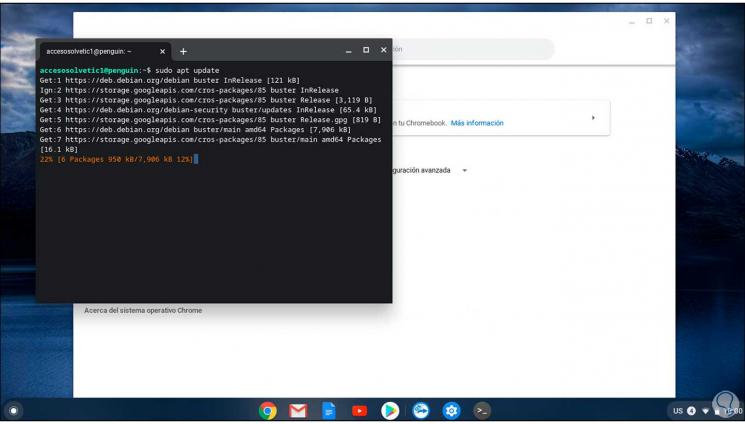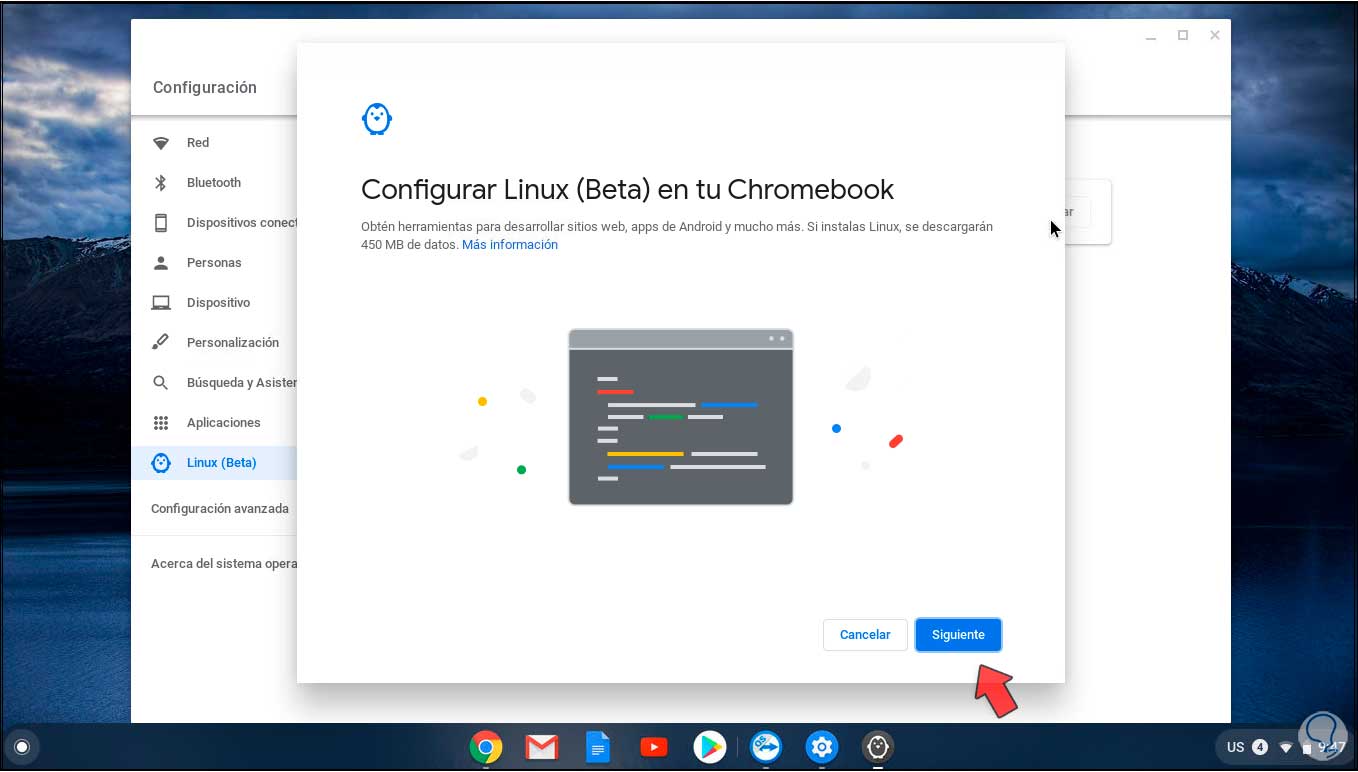
- #OPEN TERMINAL CHROMEBOOK HOW TO#
- #OPEN TERMINAL CHROMEBOOK INSTALL#
- #OPEN TERMINAL CHROMEBOOK UPDATE#
- #OPEN TERMINAL CHROMEBOOK ANDROID#
- #OPEN TERMINAL CHROMEBOOK VERIFICATION#
This includes the ability to do password-less sudo. By default, you can login as the chronos user with no password. Once you have the login prompt, you should see a set of instructions telling you about command-line access. Where the key is the right-arrow key just above the number 3 on your keyboard. If you're a Linux user, this is probably familiar. One way to get the login prompt is through something called VT-2, or “virtual terminal 2”. NOTE: Before following these instructions, remember to put your device into Developer Mode. The command prompt is built in to your device! If you‘re a Linux hacker, you probably know that Google Chrome OS is built on top of Linux and you’re wondering how you can jailbreak your device so you can get to a command prompt. However, as long as you don’t crack open the case, you shouldn‘t be able to do anything that can’t be undone by recovery (software). NOTE: If you‘ve made changes to the rootfs filesystem while in developer mode, you may have to use the recovery process to restore your device to its factory condition.
#OPEN TERMINAL CHROMEBOOK VERIFICATION#

You can tell that you're in Developer Mode if you see one of these screens when you turn the device on: Please follow the link to read more details about blocked Developer Mode. If you’re encountering issues putting your device into Developer Mode, it's possible that your device administrator has blocked Developer Mode access on your device. It also gives you access to a “root” shell. Specifically, it makes the “verified boot” that's built-in to your hardware a little bit more lax, allowing your hardware to run custom (non-Google-signed) images. NOTE: Putting your device into developer mode inherently makes it a little less secure. Whether it’s for web development purposes or you just prefer it over Chrome, you can still have all the benefits of a Chromebook and use Mozilla’s browser as well.Caution: Modifications you make to the system are not supported by Google, may cause hardware, software or security issues and may void warranty. Whichever method you choose, you will now have a fully functioning version of Firefox installed on your Chromebook. It may take a minute the first time, so don’t panic. Now you can launch Firefox from the app drawer like any other app on your Chromebook.
#OPEN TERMINAL CHROMEBOOK INSTALL#
Tap the install button and wait for it to complete. You’ll see a number of different versions of Firefox, but the one you probably want is the one just called ‘Firefox’. Open the ‘Google Play Store’ and search for Firefox.
#OPEN TERMINAL CHROMEBOOK ANDROID#
If you don’t want to deal with Linux or you’re using a tablet running Chrome OS then the Firefox Android app might be for you.
#OPEN TERMINAL CHROMEBOOK HOW TO#
How to install Firefox for Android on your Chromebook The first launch might take a while, so don’t worry, just leave it to do its thing and pretty soon you’ll be looking at a fresh install of the Firefox browser.

Once the installation has finished you will be able to launch Firefox from the ‘Linux apps’ folder in your app drawer or by typing ‘firefox-esr’ in the terminal. Still in the terminal, enter the following command: sudo apt install firefox-esr Download and install Firefox on your Chromebook

#OPEN TERMINAL CHROMEBOOK UPDATE#
It’s a good idea to make sure all packages are up to date using the following commands before going any further: sudo apt update Once it’s complete the terminal will open. When you’re happy, hit ‘Install’ and wait for your Chromebook to finish the installation of the Linux container. You’ll have to give your Linux container a name and decide how much storage you want to hand over to it. Click ‘Turn on’ and follow the on-screen instructions. Open up the ‘Settings’ app on your Chromebook and find the ‘Linux’ option in the sidebar. If you don't, the first step is to get it turned on. If you already have Linux enabled on your Chromebook then you can skip ahead to the next step. And it works just fine on ARM Chromebooks. It doesn’t have the latest features, but its security and stability patches are up to date. It involves using the ESR (Extended Support Release) of Firefox, more commonly deployed in enterprise or education.
:max_bytes(150000):strip_icc()/Screenshot2020-04-14at12.30.13AM-1c2f8905662341b1ac715b20f6829cc1-e170bbdadde0482596d4f4c465e57656.jpg)
Mozilla says that Firefox only officially supports x86 Chromebooks, but there is still a way to install the full-fat Firefox on ARM-powered laptops. If you’re using an ARM-powered Chromebook like the Lenovo IdeaPad Chromebook Duet, the method above won’t yield much success. (Image credit: TechRadar) How to install Firefox on an ARM Chromebook


 0 kommentar(er)
0 kommentar(er)
